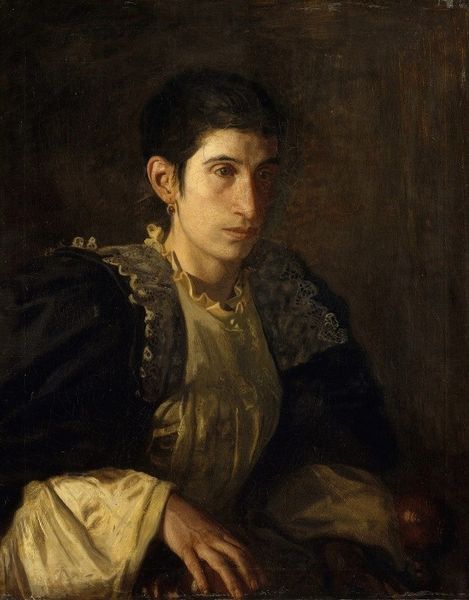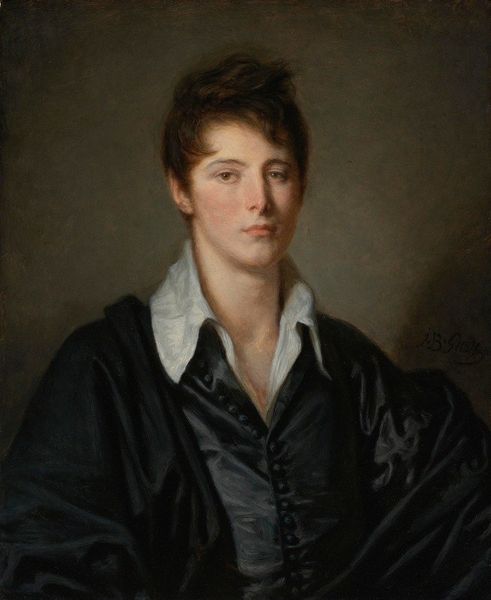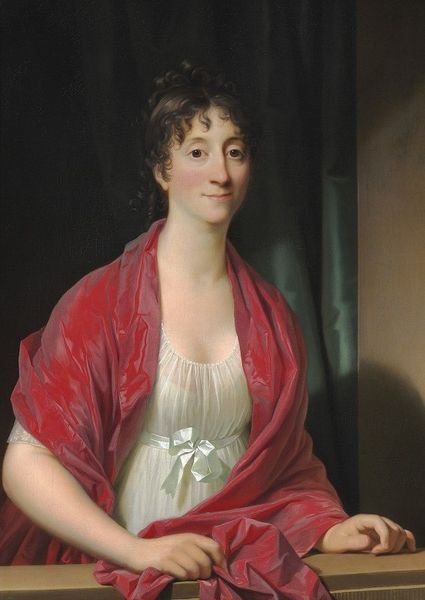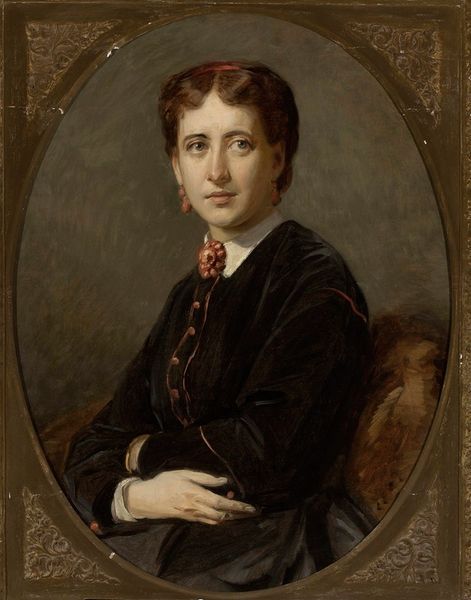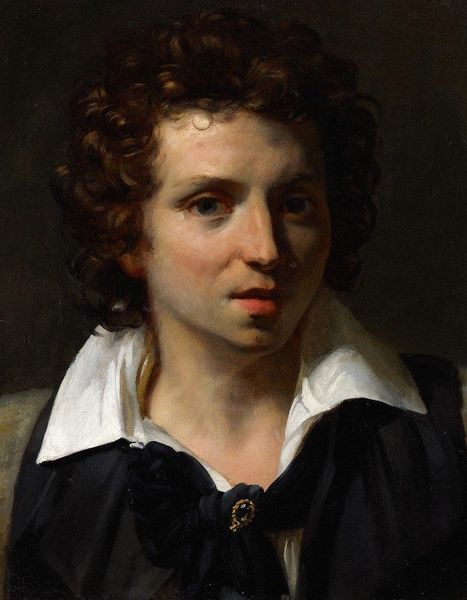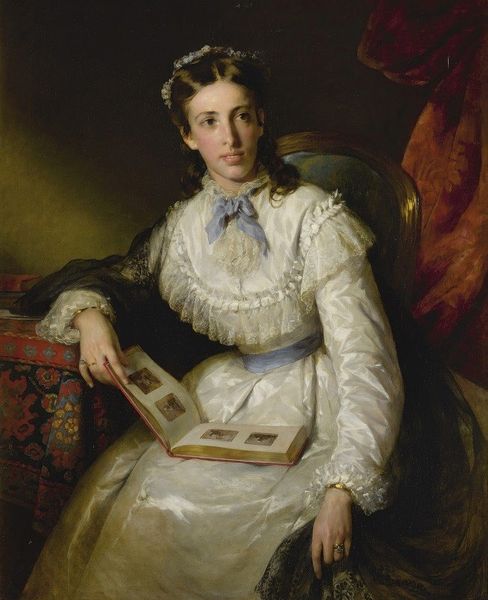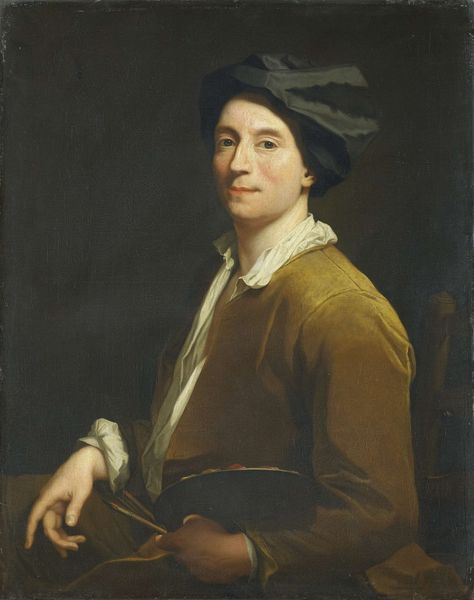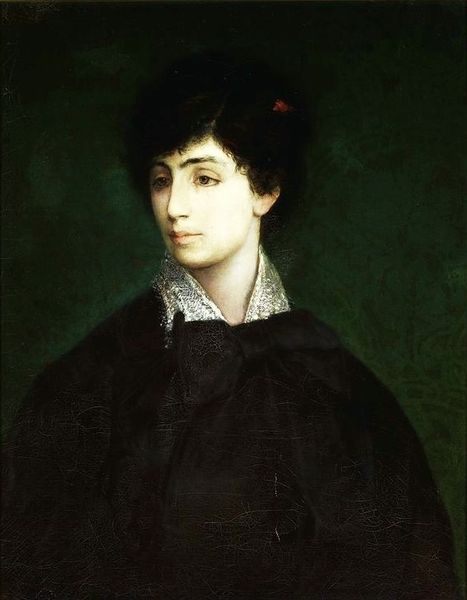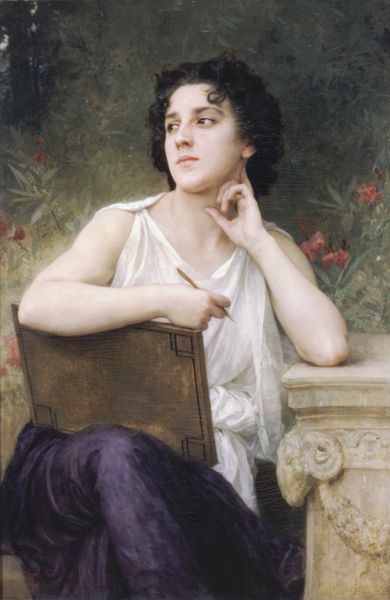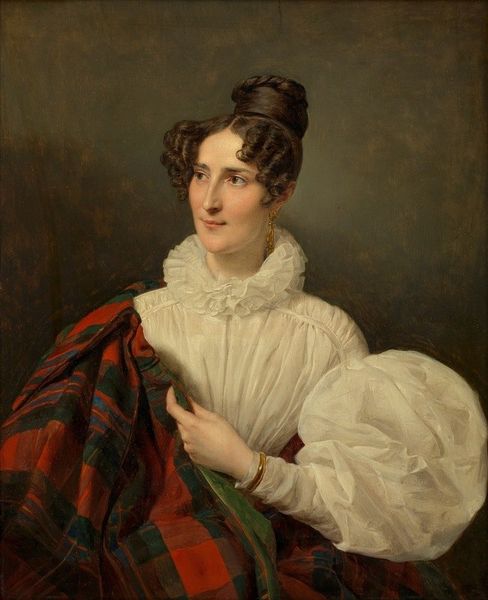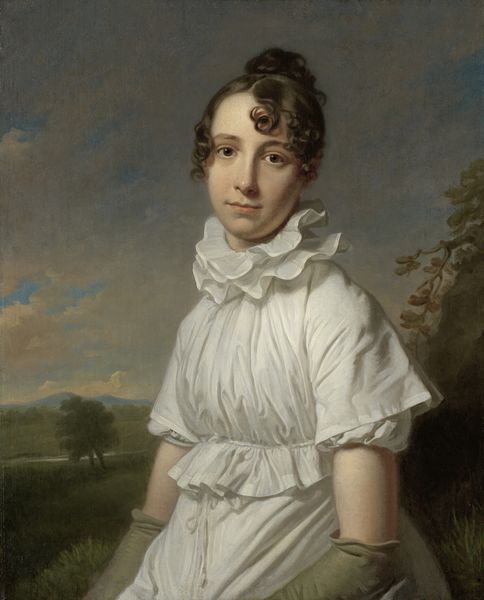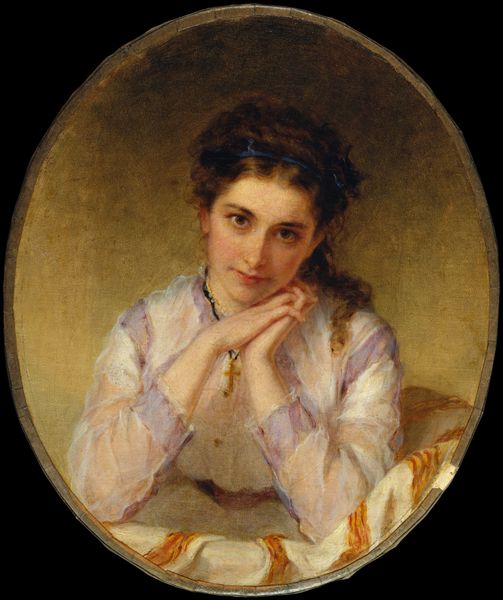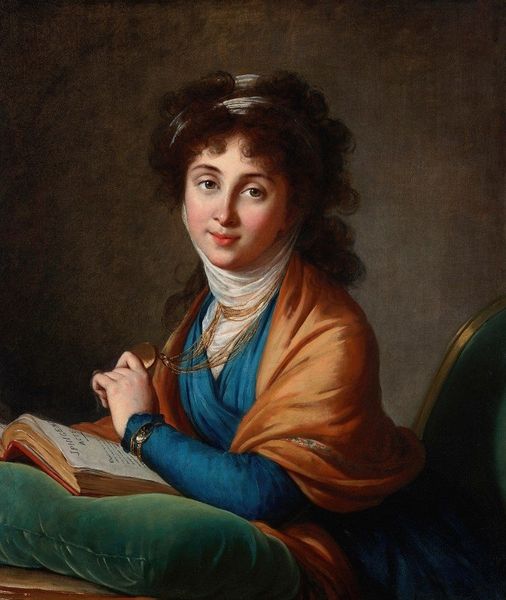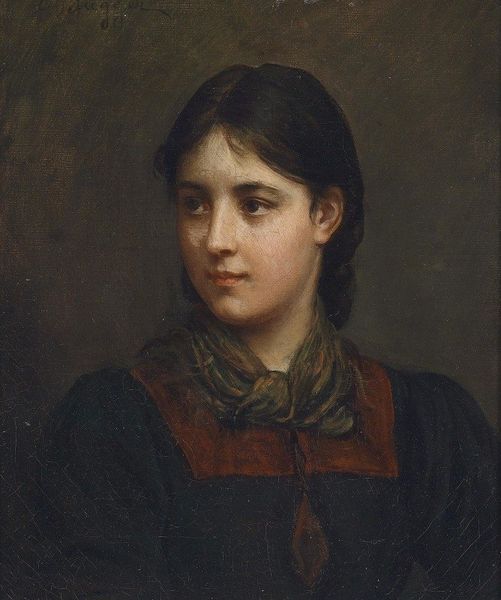
painting, oil-paint
#
portrait
#
self-portrait
#
painting
#
oil-paint
#
romanticism
#
history-painting
#
academic-art
#
realism
Dimensions: height 91 cm, width 74 cm, depth 4.7 cm
Copyright: Rijks Museum: Open Domain
Editor: We’re looking at Charles Saligo’s Self-Portrait, painted around 1824 to 1826. The oil on canvas feels rather intimate; it's almost as if we’re catching the artist in a private moment of contemplation. What catches your eye when you consider this work? Curator: I’m particularly drawn to the material presence of the painting itself. Look at the canvas texture, the way the oil paint is layered, and the artist's depiction of clothing – we can see the labour and process that constitutes this artwork. He carefully renders each item of clothing with great detail, which contrasts to his sketch which is more ambiguous. What social signals were Saligo sending in that era? Editor: You're right. The sketch looks so fast compared to the carefully rendered clothes, it’s almost as if there is supposed to be tension between these layers of creation. It’s interesting to consider the class implications of his attire – the crisp white shirt, the neatly tailored vest – as he depicts the tools of artmaking too. Is this meant to elevate it or integrate it in a vision of intellectual production? Curator: Precisely! This isn't just about representing himself; it's about positioning artistic creation as a type of labor and the artist as a specific figure within the production processes. The brush and notebook serve to illustrate Saligo's craftsmanship but also question our preconceived notions about artistic production. Considering this piece in the broader history of Romanticism can highlight how artists used materiality to redefine the boundaries between artist, artisan, and intellectual. What does this contrast and tension imply to you? Editor: It seems that he wishes to rebrand labour as not inherently working-class; he elevates what one often considers a normal garment into a statement of its own. The fact that artmaking exists alongside means that artistic skill doesn't exist independent of cultural forces or economic concerns. Now, I realize how much the piece engages with not only self-representation, but also societal expectations about art and artists. Curator: Exactly. It's about how he presents himself, what he makes, and the means by which art is created, bridging conversations on artistry, materiality, and societal structures.
Comments
No comments
Be the first to comment and join the conversation on the ultimate creative platform.
